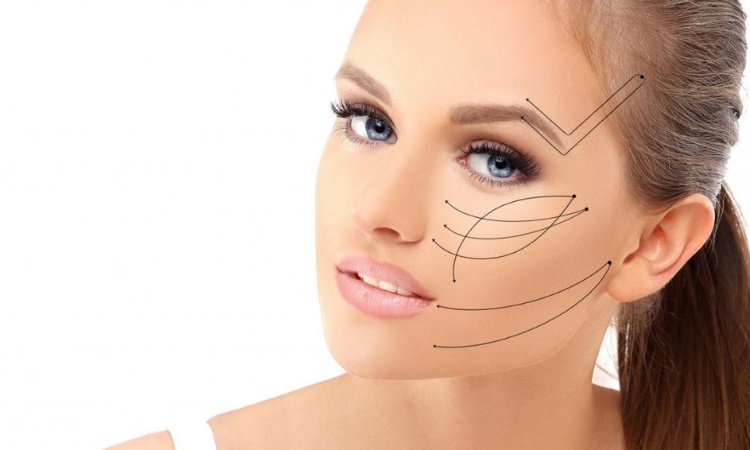
Thread lift treatments have gained popularity for their ability to lift and tighten the skin without the need for invasive surgery. However, with various techniques and options available, selecting the safest treatment tailored to your skin type can feel overwhelming. This comprehensive guide explores how to navigate your options wisely and make the best decision for your individual skin needs.
Understanding Thread Lift Basics:
What Is a Thread Lift?
A Thread Lift Dubai is a minimally invasive procedure designed to lift and firm the skin. It involves the use of biodegradable threads inserted under the skin to provide a lifted appearance. Over time, these threads stimulate collagen production, improving skin texture and elasticity.
Why Skin Type Matters:
Every individual has a unique skin type that reacts differently to cosmetic procedures. The success and safety of a thread lift depend greatly on understanding your skin’s characteristics, including its thickness, texture, elasticity, and sensitivity.
Identifying Your Skin Type:
Oily Skin:
Oily skin tends to have enlarged pores and a shiny appearance. It may be more prone to acne or clogged pores. Individuals with oily skin often benefit from thread lift techniques that enhance collagen without over-stimulating oil glands.
Dry Skin:
Dry skin can appear flaky, rough, or dull. It typically lacks moisture and elasticity. When considering a thread lift, it’s essential to select a technique that supports skin hydration and avoids unnecessary strain.
Combination Skin:
Combination skin features both oily and dry areas. Usually, the T-zone (forehead, nose, and chin) is oily, while the cheeks may be dry or normal. A balanced thread lift approach that adapts to these contrasts is ideal.
Sensitive Skin:
Sensitive skin reacts quickly to touch, environment, and cosmetic procedures. Redness, itching, or irritation may occur. For this skin type, gentler thread techniques are more suitable to avoid unnecessary irritation.
Mature or Aging Skin:
Mature skin tends to show signs of aging such as sagging, fine lines, and reduced elasticity. A thread lift can be especially beneficial here, but the choice of technique must support natural rejuvenation without causing stress to delicate skin.
Choosing the Right Thread Type:
Mono Threads:
Mono threads are smooth and primarily used to stimulate collagen without much lifting. They are ideal for individuals with fine lines or those who need subtle rejuvenation without significant lifting.
Cog Threads:
Cog threads have barbs that hook onto the skin tissue, offering a more pronounced lifting effect. This type is better suited for moderate sagging and individuals with thicker skin.
Screw Threads:
Screw threads are coiled to provide greater volume and support. They are often used for people seeking a fuller appearance, especially in the cheeks or jawline.
Matching Thread Techniques to Skin Type:
For Oily Skin:
Choose thread lift methods that involve precise thread placement with minimal disruption. Avoid overly dense thread patterns, which may trap oil or lead to clogged pores.
For Dry Skin:
Opt for techniques that stimulate collagen while preserving skin moisture. Threads that support gradual tightening work best without over-stretching already delicate skin.
For Combination Skin:
A combination approach may be used, such as mono threads for drier zones and cog threads for areas needing a firm lift. A customized thread layout ensures balance.
For Sensitive Skin:
Use thin and smooth threads with minimal anchoring. Techniques that focus on gentle stimulation over aggressive lifting are best for minimizing irritation.
For Mature Skin:
Focus on lifting and collagen stimulation. Cog or screw threads may be beneficial when carefully placed, especially in areas of sagging. The technique should be adapted to account for skin thinning and reduced elasticity.
Evaluating Thread Lift Techniques:
Anchoring Style:
Different methods of anchoring the threads can result in varied lifting effects. Choose an anchoring style that complements your skin’s resistance and natural structure.
Depth of Insertion:
The depth at which threads are inserted affects how your skin responds. Deeper insertions offer more lift but require more resilient skin. Shallow insertions may be better for delicate or sensitive skin types.
Thread Pattern:
Patterns such as mesh, vertical, or horizontal placements influence the overall lift and skin reaction. Mesh patterns work well for collagen stimulation, while vertical threads target sagging areas effectively.
Choosing a Qualified Professional:
Credentials and Experience:
Always ensure the individual performing the procedure has proper qualifications and relevant experience. They should understand thread technology and be able to assess your skin type accurately.
Skin Assessment:
An initial consultation should include a detailed skin assessment. This allows the provider to tailor the thread lift technique specifically for your skin’s texture, elasticity, and firmness.
Customization:
Avoid one-size-fits-all approaches. A customized plan that considers your unique skin type ensures safer and more effective results. Personalized placement of threads reduces complications and enhances natural-looking outcomes.
Timing and Preparation:
Skin Readiness:
Your skin should be in good condition before undergoing a Thread Lift Treatment in Dubai. Address any ongoing skin issues, such as breakouts, dryness, or inflammation, before scheduling the procedure.
Lifestyle Considerations:
Healthy habits such as hydration, a balanced diet, and adequate sleep contribute to better skin quality and improved thread lift results. Avoiding stress and following a consistent skincare routine also supports skin health before the procedure.
Monitoring Results:
Observing Skin Response:
Pay attention to how your skin reacts in the days following the treatment. Different skin types will respond at varying rates. Gentle reactions, such as slight firmness or tingling, may indicate collagen activity.
Follow-Up Consultations:
Regular check-ins help ensure the results are progressing as expected. Adjustments or additional sessions may be recommended based on how your specific skin type adapts over time.
Final Thoughts:
Choosing the safest thread lift treatment begins with knowing your skin type and understanding how different techniques interact with it. Whether you have oily, dry, combination, sensitive, or mature skin, the right approach prioritizes precision, personalization, and professional expertise. By aligning thread types and techniques with your unique skin characteristics, you set the foundation for natural, lasting rejuvenation and a refreshed appearance.